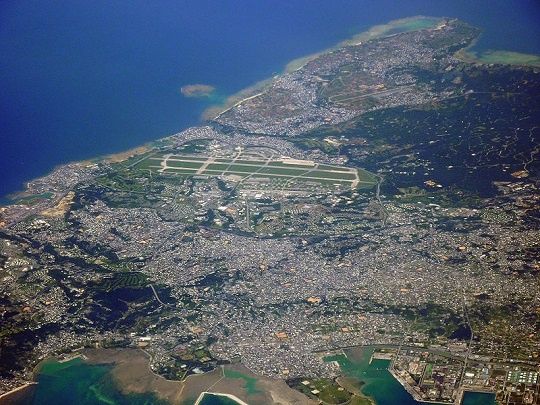A massive U.S. military base in Japan is to blame for contamination in the local water source in Okinawa, newly-released internal documents reveal.
The reports, obtained by the Japan Times under a Freedom of Information Act request, uncover a series of mishaps at the U.S. Kadena Air Base in Okinawa over the last decade and a half that “have involved at least 21,000 liters of fire extinguishing agents.”
The string of so-called accidents are related to “lax security standards” at the huge air force base, the Japan Times reported.
In one event the internal documents described as “vandalism,” a drunk U.S. Marine set off an emergency fire system that gushed out over 1,500 liters of a foam fire-fighting agent called JET-X 2.75 percent, which the U.S. classifies as a hazardous substance.
The toxic foam seeped into waterways near the military base. U.S. authorities at Kadena did not inform local Japanese officials or residents.
RELATED: 1000 Join Protests Against Planned U.S Air Base in Japan
In an even larger toxic incident in 2001, some 17,000 liters of fire-fighting agents leaked out over the course of three days, reportedly due to mechanical and electrical failures at the base.
Multiple other incidents also released thousands more liters of potentially toxic substances through fire-extinguishing agent leaks.

Kadena Air Base | Photo: Wikimedia Commons
The Kadena Air Base in Okinawa is the largest U.S. air base in the Pacific. The water systems around the base provide water to seven municipalities.
Last month, the air base assured that local water was safe to drink despite tests detecting “restricted substances” in the groundwater and waterways near the base, according to the newspaper Stars and Stripes, which reports on issue affecting members of the U.S. military.
According to the Japan Times, authorities had identified an ingredient found in fire-fighting substances, Perfluorooctanesulfonate or PFOS, in high levels in streams near the base.
OPINION: Japan’s Right to Renounce War
The U.S. Toxic Substance Control Act only allows three specific uses of the PFOS, including use by the aviation industry. The U.S. Environmental Protection Agency has labeled PFOS an “emerging contaminant” and includes the substance on a list of drinking water contaminants that “may require regulation under the Safe Drinking Water Act.”
The European Union classified PFOS as toxic and dangerous to the environment.
According to the Japan Times, the internal documents not only confirm local residents’ suspicions that the military base is the source of the water pollution problem, but also shine light on the weaknesses of the guidelines that regulate contamination on U.S. military bases in Japan.
U.S. military officials are required by regulation to report any “significant spill” that could put the local water at risk. But what qualifies as “significant” is left up to them to decide.